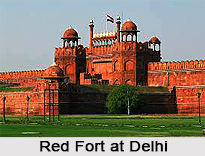 The World Heritage sites are declared by the UNESCO in1972, the General Conference of UNESCO adopted a resolution with overwhelming enthusiasm creating thereby a `Convention concerning the protection of the World Cultural and Natural Heritage`. Receiving a special attention from UNESCO they are maintained properly for their cultural, traditional and environmental values. India boasts of being a land with numerous monuments, temples and national parks. Hence there are several places throughout the sub-continent which are included in the list of World Heritage sites in India which comprise both cultural and natural properties and are scattered in East, West, North and South regions of India.
The World Heritage sites are declared by the UNESCO in1972, the General Conference of UNESCO adopted a resolution with overwhelming enthusiasm creating thereby a `Convention concerning the protection of the World Cultural and Natural Heritage`. Receiving a special attention from UNESCO they are maintained properly for their cultural, traditional and environmental values. India boasts of being a land with numerous monuments, temples and national parks. Hence there are several places throughout the sub-continent which are included in the list of World Heritage sites in India which comprise both cultural and natural properties and are scattered in East, West, North and South regions of India.
The main objectives of the convention were to define the World Heritage in both cultural and natural aspects; to enlist Sites and Monuments from the member countries which are of exceptional interest and universal value, the protection of which is the concern of all mankind; and to promote co-operation among all Nations and people to contribute for the protection of these universal treasures intact for future generations.
The enlisted sites on the World Heritage list now stands at 830 incorporating both cultural and natural sites, and endowment that is shared by all mankind and the protection of which is our primal concern. From 1977 they have been working in close co-operation with other International agencies like ICOMOS (International Council of Monuments and Sites), IUCN (International Union for the Conservation of Nature and Natural Resources) and ICCROM (International Centre for the Study of preservation and Restoration of Cultural Property).The World Heritage sites in India consist of religious places, historical monuments, national parks and sanctuaries. 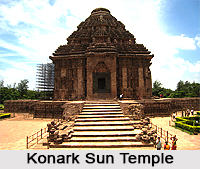 While the ancient ruins of Hampi, Bhimbetka and others reflect the splendid Indian architecture, the Sun Temple of Konark, Mahabodhi Temple and other such religious places are also part of the UNESCO recognised World Heritage Sites in India. The magnificent architecture of the Indian monuments, the antiquity of the place and the cultural importance are some of the reasons why these have been included in this prestigious list.
While the ancient ruins of Hampi, Bhimbetka and others reflect the splendid Indian architecture, the Sun Temple of Konark, Mahabodhi Temple and other such religious places are also part of the UNESCO recognised World Heritage Sites in India. The magnificent architecture of the Indian monuments, the antiquity of the place and the cultural importance are some of the reasons why these have been included in this prestigious list.
Agra Fort
Agra Fort represents the first major building project of Akbar, with remains of the ruins.
Ajanta Caves
Ajanta Caves including the unfinished ones are thirty in number, of which five) are chaitya-grihas and the rest are viharas (monasteries).
Ellora Caves
The magnificent group of rock-cut shrines of Ellora, demonstrating three diverse faiths, Buddhist, Brahmanical and Jaina were excavated during the period from fifth to the thirteenth century AD.
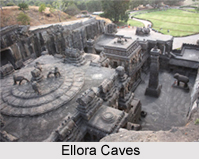 Taj Mahal
Taj Mahal
Taj on the right bank of River Yamuna, about 1.5km from the Agra fort, was built to enshrine the remains of Arjumand Banu Begam entitled Mumtaj Mahal, the queen of the Mughal emperor Shah Jahan.
Mahabalipuram Group of Monuments
Mahabalipuram or Mamallapuram, the city of Mamalla, is named after the title of great Pallava ruler Narasimhavarman-I (AD 630-668). It was a sea-port during the time of Periplus (first century AD) and Ptolemy (AD 140) and many Indian colonists sailed to South-East Asia through this port town.
Sun Temple
Konark is the Kainapara of the Periplus (first century AD) - an important port of the Orissan coast. The most notable marvel is the stately Sun Temple, built in c. AD 1250, during the reign of the Eastern Ganga King Narasimhadeva-I (AD 1238-1264), to enshrine an image of Sun (Arka), the patron deity of the place.
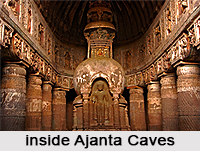 Fatehpur Sikri
Fatehpur Sikri
In honour of Saint Shaikh Salim Chishti, the Mughal Emperor Akbar, the great, founded a magnificent city on Sikri ridge. In 1571 he ordered the construction of buildings for his own use and asked the noblemen to built houses for themselves.
Among other important buildings are the tomb of Shaikh Salim Chishti, the Naubat-or-Naqqar Khana (drum-house), Taksal (mint), Karkhanas (royal workshops), Khazana (treasury), Hakim`s quarters, Diwan-i-Am (hall of public audience), house of Maryam also called Sunahra Makan (Golden House), palace of Jodha Bai, Birbal`s house etc.
Khajuraho Group of Monuments
Khajuraho, the ancient Kharjjuravahaka, was the principal seat of authority of the Chandella rulers who adorned it with numerous tanks, scores of lofty temples of sculptural grace and architectural splendour.
Elephanta Caves
Elephanta anciently known as Gharapuri, the island capital of Konkan Mauryas, is celebrated for its colossal image of Mahesamurti with three heads each representing a different form.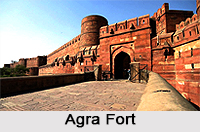
Group of Monuments at Pattadakal
Pattadakal is not only popular for Chalukyan architecture but it is also a holy place for royal coronation, Pattadakisuvolal. Temples constructed here mark the blending of the RekhaªNagara-Prasada and the Dravida Vimana styles of temple building.
Buddhist Monuments at Sanchi
Imposing Stupa-1 with four gateways and railings made Sanchi a world famous Buddhist site. The original stupa of the Asokan times was enlarged and faced with stones.
Tomb of Humayun
The first substantial example of a garden tomb on charbagh pattern with high arches and double dome was erected by Humayun`s queen Hamida Banu Begam (Haji Begam) in AD 1569.
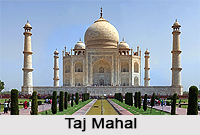 Qutub Complex
Qutub Complex
Qutub Minar in red and buff sandstone is the highest tower in India. It has a diameter of 14.32m at the base and about 2.75m on the top with a height of 72.5m.
Red Fort
The Red Fort Complex was built as the palace fort of Shahjahanabad - the new capital of the 5th Mughal Emperor of India, Shah Jahan (1628-58). It gets its name from its massive enclosing walls of red sandstone. It is adjacent to an older fort, the Salimgarh, built by Islam Shah Sur in 1546, with which it forms the Red Fort Complex.




